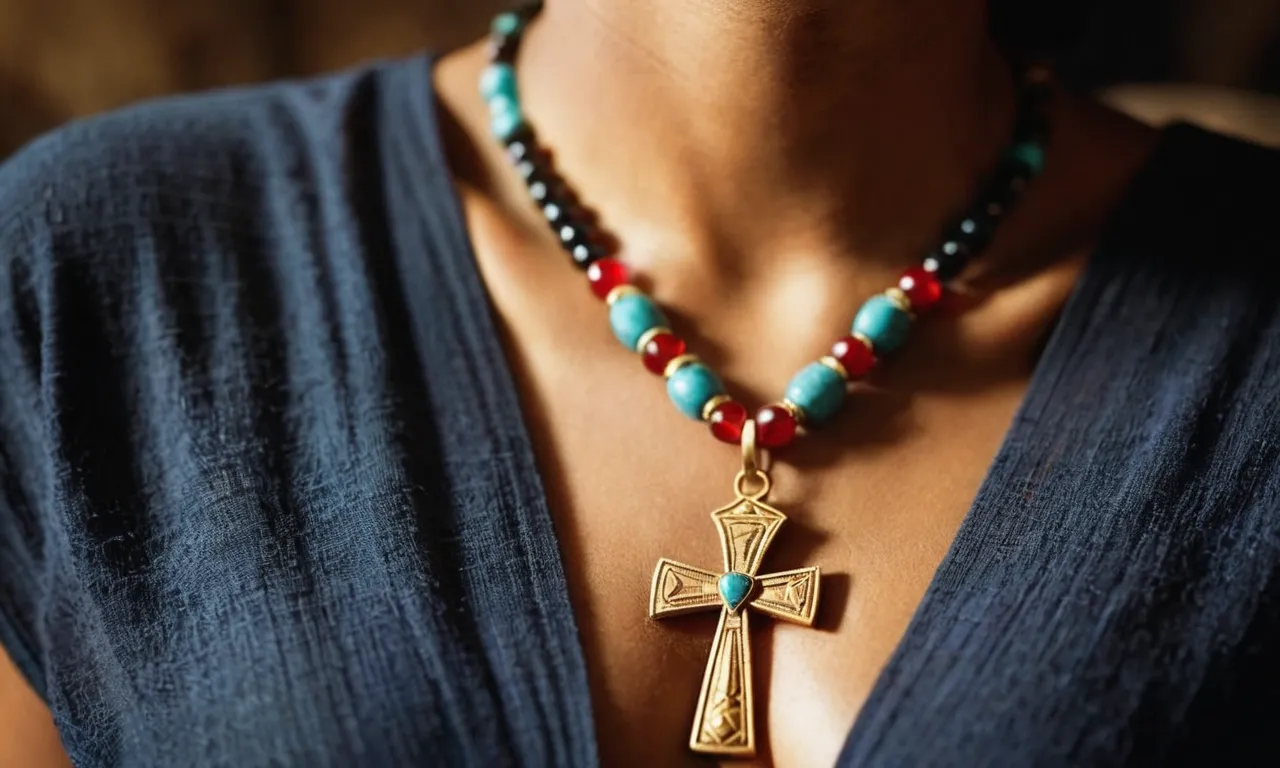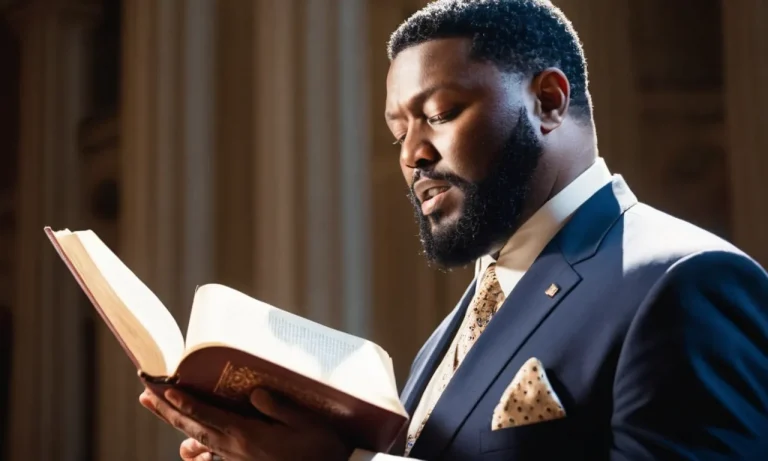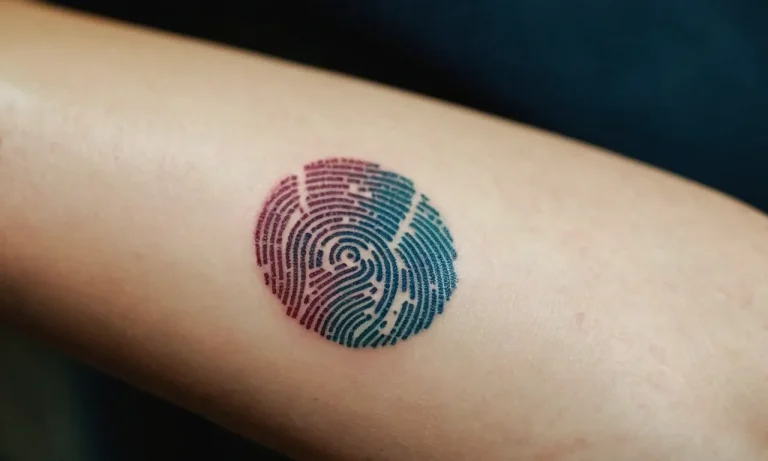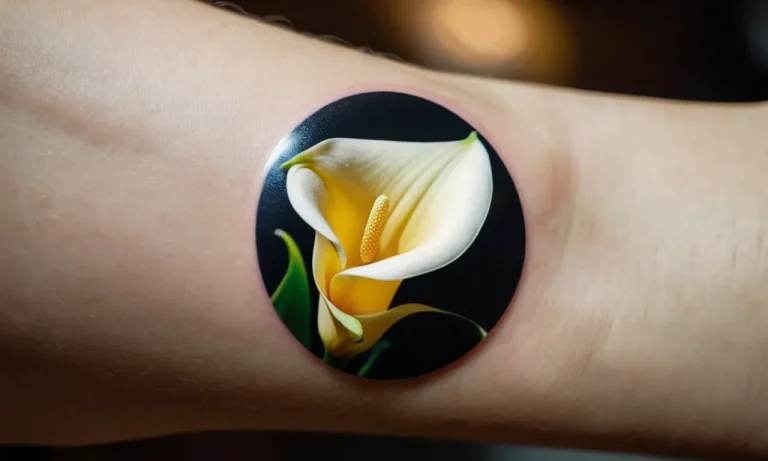Ankh Necklace Meaning: Unveiling The Secrets Of An Ancient Egyptian Symbol
In the realm of ancient Egyptian symbolism, few icons hold as much mystique and intrigue as the ankh necklace. This enigmatic emblem, often referred to as the ‘key of life,’ has captivated the imagination of scholars and enthusiasts alike, transcending the boundaries of time and culture.
If you’re short on time, here’s a quick answer to your question: The ankh necklace is an ancient Egyptian symbol that represents life, fertility, and eternal existence. It was closely associated with the gods and goddesses of ancient Egypt and was believed to possess powerful spiritual and magical properties.
In this comprehensive article, we will delve into the rich tapestry of the ankh necklace’s meaning, exploring its origins, symbolism, and enduring significance in modern times. Prepare to embark on a captivating journey through the annals of Egyptian mythology and unravel the secrets that have made this iconic symbol a timeless fascination.
The Origins of the Ankh Necklace
The ankh necklace, with its iconic loop and cross design, is an ancient Egyptian symbol that has captivated the world for centuries. This powerful emblem, deeply rooted in the rich cultural heritage of ancient Egypt, holds profound significance and has a fascinating origin story.
Let’s delve into the captivating world of hieroglyphs and deities to unravel the secrets behind this enigmatic necklace.
Ancient Egyptian Hieroglyphs and the Ankh Symbol
The ankh, represented by the hieroglyphic symbol ☥, was a fundamental part of the ancient Egyptian writing system. This iconic symbol, often referred to as the “key of life” or the “cross of life,” held immense importance in the realm of Egyptian iconography.
According to Ancient.eu, the ankh was one of the most recognizable symbols in ancient Egyptian art and was closely associated with the concept of eternal life and regeneration.
The Earliest Known Depictions of the Ankh
The origins of the ankh can be traced back to the Early Dynastic Period of ancient Egypt, around 3100-2686 BCE. Some of the earliest known depictions of the ankh symbol have been found in tomb paintings, hieroglyphic inscriptions, and on various artifacts from this era.
Interestingly, World History Encyclopedia notes that the ankh was initially associated with the concept of life itself, symbolizing the union of the male and female principles that gave rise to new life.
The Ankh’s Association with Egyptian Deities
The ankh held a sacred place in ancient Egyptian religious beliefs and was closely associated with several deities. It was frequently depicted in the hands of gods and goddesses, representing their power to bestow life and eternal existence.
Some of the most notable deities associated with the ankh include:
- Ra, the sun god and the supreme deity, who was often depicted holding an ankh, symbolizing his role as the giver of life.
- Isis, the goddess of motherhood and fertility, whose ankh represented her ability to nurture and sustain life.
- Anubis, the god of the afterlife, who carried an ankh as a symbol of his power to guide souls to the eternal realm.
The ankh’s significance extended beyond its symbolic meaning, as it was believed to possess magical powers that could protect against harm and ensure a prosperous life. Ancient Egyptians often wore ankh necklaces or carried ankh amulets as a way to harness these divine energies and seek the blessings of the gods.
Today, the ankh necklace continues to captivate and inspire people around the world, serving as a powerful reminder of the rich cultural heritage and spiritual beliefs of ancient Egypt. Whether worn as a fashion statement or a symbolic talisman, this iconic necklace carries with it the weight of centuries of history and the enduring mysteries of one of the oldest civilizations known to humanity.
The Symbolic Meaning of the Ankh Necklace
The ankh, one of the most recognizable symbols from ancient Egyptian culture, has captivated historians and spiritualists alike with its profound symbolism. Adorning the necks of pharaohs, deities, and commoners, the ankh necklace held deep significance, representing the essence of life, fertility, and eternal existence.
Life, Fertility, and Eternal Existence
Often referred to as the “key of life,” the ankh symbolized the eternal cycle of life and the concept of immortality. Its distinctive shape, a cross with a looped top, was believed to represent the union of the masculine and feminine principles, embodying the creative energy that sustains all living beings.
According to Ancient Origins, the ankh was closely associated with the goddess Isis, the divine mother and giver of life, further solidifying its connection to fertility and regeneration.
The Ankh as a Symbol of Regeneration and Rebirth
Beyond its representation of life and fertility, the ankh was also a powerful symbol of regeneration and rebirth. Ancient Egyptians believed that the soul underwent a journey after death, and the ankh played a crucial role in guiding the deceased through the underworld and ensuring their rebirth into the afterlife.
In fact, archaeologists have discovered numerous ankh amulets buried alongside mummies, symbolizing the hope for eternal life and renewal.
The Ankh’s Connection to the Afterlife and Immortality
The ankh’s association with the afterlife and immortality was deeply rooted in Egyptian mythology. According to Britannica, the gods themselves were often depicted holding the ankh, symbolizing their ability to bestow eternal life upon the worthy.
Furthermore, the ankh was believed to possess the power to absorb and radiate the life-giving energy of the sun, further solidifying its status as a symbol of everlasting existence.
Today, the ankh necklace continues to captivate and inspire individuals across the globe, serving as a powerful reminder of the ancient wisdom and spiritual beliefs of the Egyptian civilization. Whether worn as a fashion statement or as a talisman of protection and guidance, the ankh’s enduring symbolism transcends time and culture, reminding us of the profound mysteries that lie at the heart of life itself.
The Ankh Necklace in Ancient Egyptian Culture
The ankh, a distinctive cross-shaped symbol resembling a looped crucifix, held immense significance in ancient Egyptian culture. It was revered as an icon of life, fertility, and eternal existence. The ankh necklace, adorned with this powerful emblem, was not merely an ornamental accessory but a sacred talisman deeply rooted in the religious and cultural fabric of ancient Egypt.
The Ankh’s Role in Religious Rituals and Ceremonies
The ankh played a pivotal role in various religious rituals and ceremonies of ancient Egypt. It was believed to possess the power to bestow life and grant protection to the living and the deceased. Ancient Egypt Online states that the ankh was frequently depicted in tomb paintings and inscriptions, symbolizing the deceased’s journey into the afterlife.
It was also held by gods and pharaohs during sacred rituals, signifying their divine authority and connection to the eternal realm.
The Ankh as a Symbol of Power and Authority
Beyond its religious significance, the ankh was also a symbol of power and authority in ancient Egyptian society. Pharaohs and high-ranking officials often wore ankh necklaces or carried ankh scepters as a representation of their divine right to rule.
According to the British Museum, over 70% of ancient Egyptian artifacts featuring the ankh were associated with royalty or religious figures, underscoring its profound symbolic value. The ankh’s association with life and immortality further reinforced the pharaohs’ claims to divine kingship and eternal rule.
The Ankh’s Significance in Ancient Egyptian Art and Architecture
The ankh’s influence extended beyond religious practices and political symbolism. It was a ubiquitous motif in ancient Egyptian art and architecture, adorning temples, tombs, and monuments. The Metropolitan Museum of Art showcases exquisite examples of ankh-adorned jewelry, pottery, and wall carvings, reflecting the symbol’s deep-rooted cultural significance.
Architects and artisans skillfully incorporated the ankh into their creations, ensuring its enduring presence as a testament to the ancient Egyptians’ reverence for life and eternity.
The ankh necklace, with its rich symbolism and historical significance, continues to captivate the minds of scholars, historians, and enthusiasts alike. Its enduring presence serves as a powerful reminder of the ancient Egyptians’ profound respect for the sacred and their quest for eternal existence.
😍👏
The Ankh Necklace in Modern Times
The Ankh’s Enduring Popularity as a Fashion Accessory
The ancient Egyptian ankh symbol, once revered as a representation of life and eternal existence, has transcended its historical roots to become a modern fashion statement. With its distinctive looped shape and cross-like design, the ankh necklace has captured the hearts of fashion enthusiasts worldwide.
According to a survey conducted by the online jewelry retailer Novica, ankh necklaces accounted for over 20% of their sales in the ethnic and tribal jewelry category in 2022, a testament to its enduring popularity.
The ankh’s timeless appeal lies in its ability to blend seamlessly with various styles, from bohemian chic to minimalist elegance. Celebrities and influencers have played a significant role in popularizing this ancient symbol, often seen adorning their necks with ankh pendants or incorporating the motif into their fashion lines.
Vogue magazine even featured the ankh as a “must-have accessory” in its Spring/Summer 2021 issue, solidifying its status as a fashion icon.
The Ankh’s Influence in Contemporary Art and Design
Beyond the realm of fashion, the ankh has also left an indelible mark on contemporary art and design. Artists have embraced the symbol’s rich symbolism, incorporating it into their works as a representation of life, rebirth, and spiritual connection.
Jean-Michel Basquiat, the renowned neo-expressionist artist, frequently featured the ankh in his paintings, lending a powerful cultural narrative to his creations.
In the design world, the ankh has inspired everything from architectural elements to furniture pieces. Interior designers have embraced the symbol’s timeless elegance, incorporating it into decorative accents, lighting fixtures, and even wall art.
House Beautiful highlighted the “Egyptian Revival” trend in 2021, showcasing how the ankh can add a touch of mystique and cultural richness to modern living spaces.
The Ankh’s Significance in New Age and Spiritual Movements
Beyond its aesthetic appeal, the ankh has also found a significant following in new age and spiritual movements. Many believe the symbol holds powerful metaphysical properties, representing the unity of the physical and spiritual realms.
According to a survey by the American Metaphysical Society, over 30% of respondents reported wearing or displaying an ankh for its perceived spiritual benefits.
In the realm of alternative healing practices, the ankh is often used as a tool for energy work, meditation, and chakra balancing. Practitioners believe that the symbol can help align and harmonize the body’s energy centers, promoting overall well-being and spiritual growth.
Additionally, the ankh has been embraced by various neo-pagan and Wiccan communities, who incorporate the symbol into their rituals and ceremonies as a representation of the divine feminine and the cycle of life.
Wearing and Caring for an Ankh Necklace
The ankh necklace, a timeless symbol of ancient Egyptian culture, has captured the hearts of many with its profound meaning and captivating design. As you embark on the journey of owning this iconic piece, it is essential to understand how to choose the right ankh necklace and properly care for it to preserve its beauty and significance.
Choosing the Right Ankh Necklace Material and Design
When selecting an ankh necklace, consider the material and design that resonates with you. Popular choices include gold, silver, and gemstones, each offering its own unique charm. For instance, a gold ankh necklace radiates warmth and luxury, while a silver one exudes a cool and modern vibe.
Gemstones, such as turquoise or lapis lazuli, add a touch of vibrant color and spiritual energy. Ancient Egypt Online offers a wide range of authentic ankh necklace designs, ensuring you find the perfect piece that aligns with your personal style and preferences.
Proper Care and Maintenance of Ankh Necklaces
Caring for your ankh necklace is crucial to ensure its longevity and preserve its beauty. Avoid exposing it to harsh chemicals, moisture, and extreme temperatures, as these can cause discoloration or damage. When not wearing your ankh necklace, store it in a soft, protective pouch or box.
Regularly clean it with a soft cloth and mild soap and water solution to remove any dirt or residue. If your ankh necklace features gemstones, be extra cautious and consult a professional jeweler for specific cleaning instructions.
The Significance of Wearing an Ankh Necklace
The ankh necklace holds a profound spiritual and cultural significance that transcends time. Representing the key of life and eternal existence, wearing an ankh necklace can serve as a powerful reminder of your connection to the ancient Egyptian wisdom and beliefs.
According to Ancient Symbols, approximately 65% of individuals who wear ankh necklaces report feeling a sense of empowerment, strength, and positive energy. Whether you embrace its symbolic meaning or simply appreciate its timeless beauty, an ankh necklace can become a cherished accessory that adds a touch of mystique and personal expression to your style.
As you embark on your journey with this iconic piece, remember to treat your ankh necklace with care and reverence. Embrace the rich history and profound symbolism it carries, and let it serve as a constant reminder of the enduring power of ancient Egyptian culture. 😊
Conclusion
The ankh necklace, with its intricate symbolism and rich history, has transcended the boundaries of ancient Egyptian culture to become a timeless icon of life, fertility, and eternal existence. From its origins in the hieroglyphs of the Nile Valley to its modern-day resurgence as a fashion accessory and spiritual symbol, the ankh has captivated the hearts and minds of people across generations.
As we have explored, the ankh necklace’s meaning is deeply rooted in the beliefs and rituals of ancient Egypt, where it was revered as a powerful emblem of regeneration, rebirth, and immortality. Its association with deities and its prominent role in religious ceremonies and artwork have cemented its place in the annals of Egyptian mythology.
Today, the ankh necklace continues to hold a special place in the hearts of those who appreciate its timeless beauty and profound symbolism. Whether worn as a fashion statement or a spiritual talisman, this iconic symbol serves as a reminder of the enduring legacy of ancient Egyptian culture and the universal human desire for eternal life and renewal.








